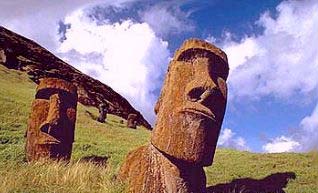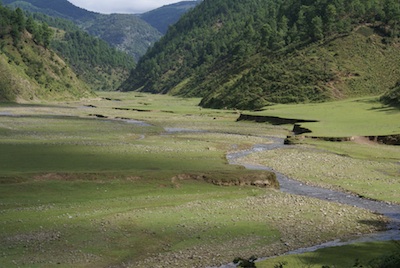Home Page
Format and Requirements
Class Schedule
Paper Assignment
Go-post
Dropbox
Email the class
If you need help with your paper, particularly with how to state and organize an argument effectively, the anthropology department has now re-opened the Anthropology Writing Center. It's open most of the time during "working hours," and staffed by at least one veteran of the Historical Ecology class.
|
Steps toward your final paper project
Step 1: Select a Problem: Select a research problem and an area:
On or before October 25, submit through the go-Post discussion area, a paragraph (abstract) describing a contemporary problem or issue relating to human-environmental interactions through time in a specific region. Your paragraph should outline the problem and its relevance to the modern world beyond your specific region. Include a bibliographical list of 5 or more primary sources using the reference format used given below (same as used on the syllabus). When the class has been taught before, people wrote on a variety of topics.
Step 2: Initial feedback
You will receive feedback on your initial idea from the course instructors on or before November 2. You will then have a chance to modify your topic and/or begin further research into it.
Step 3: Detailed research
Lots of time in library and/or on E Journal searches, reading, thinking, outlining, and writing.
Step 4: Expanded abstracts
Your expanded abstract should be 300-500 words. It should describe the argument you plan to make in your paper, as well as the way you are going to apply theoretical approaches or models to your specific case study. You should append a bibliography of at least 10 sources. They should be posted on the go-post board on or before 5:00 p.m. on Wednesday, Nov 12.
Step 5: Peer critiques
You will be assigned peer-partners and must visit the course expanded abstracts go-post, read the extended abstract of three or four assigned partners (sorry--the class doesn't divide neatly into fours), and be ready to present oral comments and suggestions on the other abstracts in your group during the class on On Nov 12. Students will introduce their topics and a peer-reviewers will then provide feedback about how the paper topic might be made stronger.
Step 6: More research
After the peer review, you have 3-4 weeks (depending on which day you volunteer or are assigned to present) to complete your research and prepare your paper for presentation in class.
Step 7: Presentations and Peer Evaluations
In the last 4 class meetings (December 1, 3, 8, and 10) you will deliver 11-minute, conference style presentations of your research results (complete with computer generated slides). We will take volunteers for the first session (folks who want to go earlier) and then will assign randomly after that.
During the presentation sessions, you will also be asked to evaluate each other's presentations. Please print out and bring to class for each presentation enough copies of the peer evaluation form, fill them out at the end of each presentation, and hand them in.
Step 8: THE FINAL PAPER IS DUE to the Dropbox on December 14 at 5:00 p.m.
It should be 5000-7000 words plus bibliography, tables, and figures. The paper should outline the contemporary issue of general importance and examine the historical development of the issue in historical/archaeological terms. The conclusion should be a forceful argument linking the historical dimension to the clarification of the problem or issue.
PLAGIARISM WILL NOT BE TOLERATED.
It is very important that the work you submit or present be your own. It is not ethical to copy and paste text from web sites, books, or published articles, unless you insert quotations and citation to the source of the quote. Paraphrasing is legitimate as long as it is a short passage (1-2 sentences at most) and you have completely transformed the original into your own words (implying you have internalized the meaning) and provide a citation to the original. For more information, please consult the University Policy.
Proper Citation and Referencing:
Citations: In the text of your paper, you should cite relevant sources in parentheses with the author/s name/s, date of publication, and page numbers, if specific. Multiple citations should be positioned in alphabetical order as in the following examples.
"Historical ecology has been defined by several people (Balee 1998; Crumley 1994; Whitehead 1998; Winterhalder 1994)."
OR
"As Crumley (1998:ix) notes.."
Bibliography:
After the text of your paper, you should include a list of the full references associated with all citations included in the paper text.
Appropriate Formats:
Journal reference:
Author Last name, First name (year of publication) Title of article. Journal name, vol(issue):page-numbers.
Carpenter, Stephen R., and Lance H. Gunderson (2001). Coping with Collapse: Ecological and Social Dynamics in Ecosystem Management. BioScience 51(6):451-57.
Book Reference:
Author Last name, First name (year of publication). Title of Book. Place of Publication: Publisher.
van der Leeuw, Sander and Robin Torrence, eds. (1989) What's New?: A Closer Look at the Process of Innovation. Boston: Unwin Hyman. |



